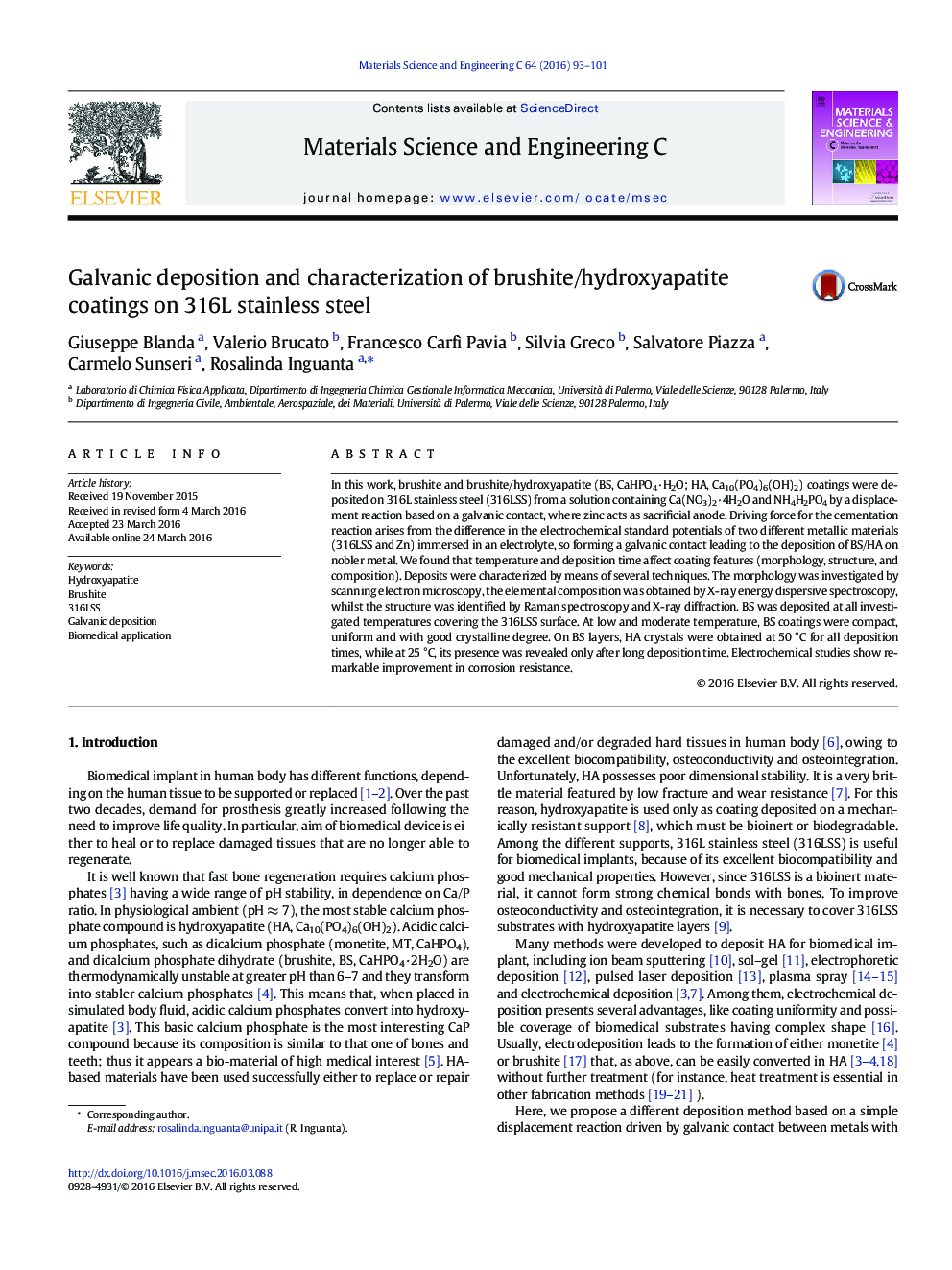| کد مقاله | کد نشریه | سال انتشار | مقاله انگلیسی | نسخه تمام متن |
|---|---|---|---|---|
| 1427938 | 1509157 | 2016 | 9 صفحه PDF | دانلود رایگان |

• Brushite/hydroxyapatite coatings were obtained by a galvanic deposition method.
• Galvanic deposition is simple and cheap and does not require external power supply.
• Temperature is a key parameter to control composition and morphology of coatings.
• Ca/P ratio changes with deposition time, from about 1 up to an optimum value of 1.7.
• Compact and adherent layer covering substrate surface were obtained on 316LSS.
In this work, brushite and brushite/hydroxyapatite (BS, CaHPO4·H2O; HA, Ca10(PO4)6(OH)2) coatings were deposited on 316L stainless steel (316LSS) from a solution containing Ca(NO3)2·4H2O and NH4H2PO4 by a displacement reaction based on a galvanic contact, where zinc acts as sacrificial anode. Driving force for the cementation reaction arises from the difference in the electrochemical standard potentials of two different metallic materials (316LSS and Zn) immersed in an electrolyte, so forming a galvanic contact leading to the deposition of BS/HA on nobler metal. We found that temperature and deposition time affect coating features (morphology, structure, and composition). Deposits were characterized by means of several techniques. The morphology was investigated by scanning electron microscopy, the elemental composition was obtained by X-ray energy dispersive spectroscopy, whilst the structure was identified by Raman spectroscopy and X-ray diffraction. BS was deposited at all investigated temperatures covering the 316LSS surface. At low and moderate temperature, BS coatings were compact, uniform and with good crystalline degree. On BS layers, HA crystals were obtained at 50 °C for all deposition times, while at 25 °C, its presence was revealed only after long deposition time. Electrochemical studies show remarkable improvement in corrosion resistance.
Figure optionsDownload as PowerPoint slide
Journal: Materials Science and Engineering: C - Volume 64, 1 July 2016, Pages 93–101